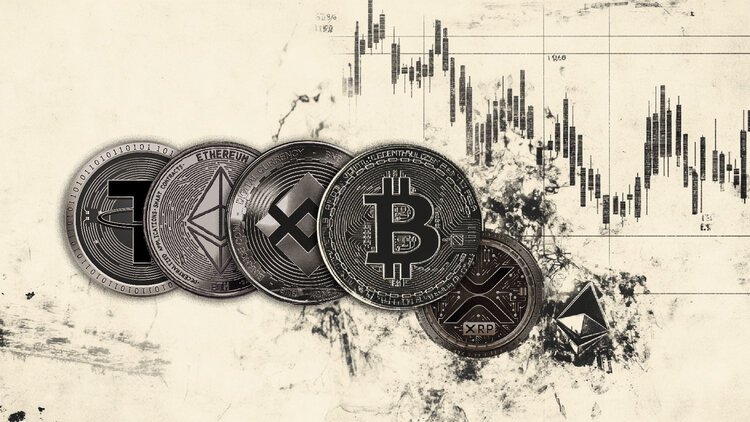- US Nonfarm Payrolls are seen rising by 200K in March after February’s 275K increase.
- The United States Bureau of Labor Statistics will publish the labor market report at 12:30 GMT.
- US employment data could impact the Fed rate cut expectations and the US Dollar dynamics.
The United States (US) Bureau of Labor Statistics (BLS) will publish the high-impact Nonfarm Payrolls (NFP) data on Friday at 12:30 GMT. The US labor market data is closely scrutinized by market participants for fresh insights on the Federal Reserve’s (Fed) outlook on the interest rates, which could impact the US Dollar price action in the near term.
What to expect in the next Nonfarm Payrolls report?
The Nonfarm Payrolls report is expected to show that the US economy may have created 200,000 jobs last month, down from a 275,000 increase registered in February. January’s data was significantly revised down to show 229,000 jobs created instead of 353,000 as previously reported.
The Unemployment Rate is likely to hold steady at 3.9% in the same period. Meanwhile, Average Hourly Earnings, an important gauge of wage inflation, is set to rise 4.1% in the year through March, cooling off slightly from February’s 4.3% growth.
The headline NFP figure, along with the previous revisions and wage inflation data, will hold the key to affirm the market expectations of a Fed interest rate cut as early as June. The probability that the Fed will begin lowering rates in June stands at 62%, according to the CME Group’s FedWatch Tool, up from the 58% shown at the start of the week on Monday.
The revival in the dovish Fed expectations could be attributed to the recent commentaries from the Fed policymakers and the weaker-than-expected US ISM Services PMI, as markets paid little heed to strong US JOLTs Job Openings and ADP Employment data.
Amidst the recent Fedspeak, Fed Chairman Jerome Powell on Wednesday reassured markets of the likelihood of interest rate cuts this year. Powell said that “if the economy evolves broadly as we expect,” he and his Fed colleagues largely agree that a lower policy interest rate will be appropriate “at some point this year.” Meanwhile, Fed Governor Adriana Kugler said early Thursday that she expects the disinflation trend will continue, which will pave the way for the central bank to cut interest rates.
Meanwhile, the US private sector added 184,000 jobs in March, a decent increase from the upwardly revised 155,000 print in February, the ADP reported on Wednesday. The data beat the analysts’ estimates of a 148,000 job gain. US job openings rose by 8,000 to 8.756 million on the last day of February, the Labor Department’s Bureau of Labor Statistics said on Tuesday. The market forecast was for an 8.74 million reading.
Previewing the March jobs report, TD Securities (TDS) analysts said: “We look for job growth to have lost further momentum in March following the boomy Jan/Feb gains that came in the 200k-300k range. Household survey noise will keep the UE rate volatile, however, we expect it to stay unchanged at 3.9%.”
“We also look for wage growth to move back to the 0.3% m/m pace —and down 0.2pp to 4.1% y/y— after the ups and downs of the last couple of reports,” the TDS analysts added.
How will US March Nonfarm Payrolls affect EUR/USD?
Increased bets for Fed rate cuts keep the US Dollar undermined against its major counterparts, driving the EUR/USD pair to a weekly high near 1.0875. It remains to be seen if the pair can sustain its upswing in the lead-up to the US NFP showdown.
A strong-than-expected NFP headline figure above the 200,000 expected increase combined with hotter-than-expected wage inflation data could temper June Fed rate cut bets, providing the much-needed lift to the US Dollar while sending EUR/USD back toward 1.0750. Conversely, if the US employment data points to loosening labor market conditions and decelerating trends in pay growth, the Greenback could come under renewed selling pressure amid reinforcement of dovish Fed expectations. In such a case, EUR/USD could advance through the 1.0900 threshold.
Dhwani Mehta, Analyst at FXStreet, offers a brief technical outlook for EUR/USD:
“The EUR/USD pair has recaptured the critical 50-day Simple Moving Average (SMA) at 1.0830 on a daily closing basis on Wednesday. The 14-day Relative Strength Index (RSI) flirts with the 50 level, suggesting that buyers lean in favor of the pair in the near term”.
“Buyers need to take out the 100-day SMA at 1.0876 to extend the recovery toward the 1.0900 level. The next upside barrier for EUR/USD will be then seen at the March 21 high of 1.0943. Conversely, the initial demand area is seen at the 1.0800 round figure, below which the April 3 low at 1.0764 will be tested. The line in the sand for Euro buyers is envisioned at 1.0725, April lows”, Dhwani adds.
Euro price today
The table below shows the percentage change of Euro (EUR) against listed major currencies today. Euro was the weakest against the Japanese Yen.
| USD | EUR | GBP | CAD | AUD | JPY | NZD | CHF | |
| USD | 0.08% | 0.11% | 0.19% | 0.26% | -0.05% | 0.24% | 0.10% | |
| EUR | -0.08% | 0.03% | 0.11% | 0.18% | -0.13% | 0.17% | 0.03% | |
| GBP | -0.11% | -0.03% | 0.07% | 0.15% | -0.16% | 0.13% | -0.01% | |
| CAD | -0.21% | -0.13% | -0.07% | 0.05% | -0.26% | 0.06% | -0.10% | |
| AUD | -0.26% | -0.18% | -0.15% | -0.05% | -0.30% | -0.02% | -0.16% | |
| JPY | 0.04% | 0.14% | 0.16% | 0.22% | 0.30% | 0.29% | 0.14% | |
| NZD | -0.26% | -0.16% | -0.13% | -0.05% | 0.02% | -0.29% | -0.16% | |
| CHF | -0.11% | -0.02% | 0.01% | 0.09% | 0.16% | -0.16% | 0.15% |
The heat map shows percentage changes of major currencies against each other. The base currency is picked from the left column, while the quote currency is picked from the top row. For example, if you pick the Euro from the left column and move along the horizontal line to the Japanese Yen, the percentage change displayed in the box will represent EUR (base)/JPY (quote).
US Dollar FAQs
The US Dollar (USD) is the official currency of the United States of America, and the ‘de facto’ currency of a significant number of other countries where it is found in circulation alongside local notes. It is the most heavily traded currency in the world, accounting for over 88% of all global foreign exchange turnover, or an average of $6.6 trillion in transactions per day, according to data from 2022. Following the second world war, the USD took over from the British Pound as the world’s reserve currency. For most of its history, the US Dollar was backed by Gold, until the Bretton Woods Agreement in 1971 when the Gold Standard went away.
The most important single factor impacting on the value of the US Dollar is monetary policy, which is shaped by the Federal Reserve (Fed). The Fed has two mandates: to achieve price stability (control inflation) and foster full employment. Its primary tool to achieve these two goals is by adjusting interest rates. When prices are rising too quickly and inflation is above the Fed’s 2% target, the Fed will raise rates, which helps the USD value. When inflation falls below 2% or the Unemployment Rate is too high, the Fed may lower interest rates, which weighs on the Greenback.
In extreme situations, the Federal Reserve can also print more Dollars and enact quantitative easing (QE). QE is the process by which the Fed substantially increases the flow of credit in a stuck financial system. It is a non-standard policy measure used when credit has dried up because banks will not lend to each other (out of the fear of counterparty default). It is a last resort when simply lowering interest rates is unlikely to achieve the necessary result. It was the Fed’s weapon of choice to combat the credit crunch that occurred during the Great Financial Crisis in 2008. It involves the Fed printing more Dollars and using them to buy US government bonds predominantly from financial institutions. QE usually leads to a weaker US Dollar.
Quantitative tightening (QT) is the reverse process whereby the Federal Reserve stops buying bonds from financial institutions and does not reinvest the principal from the bonds it holds maturing in new purchases. It is usually positive for the US Dollar.

























